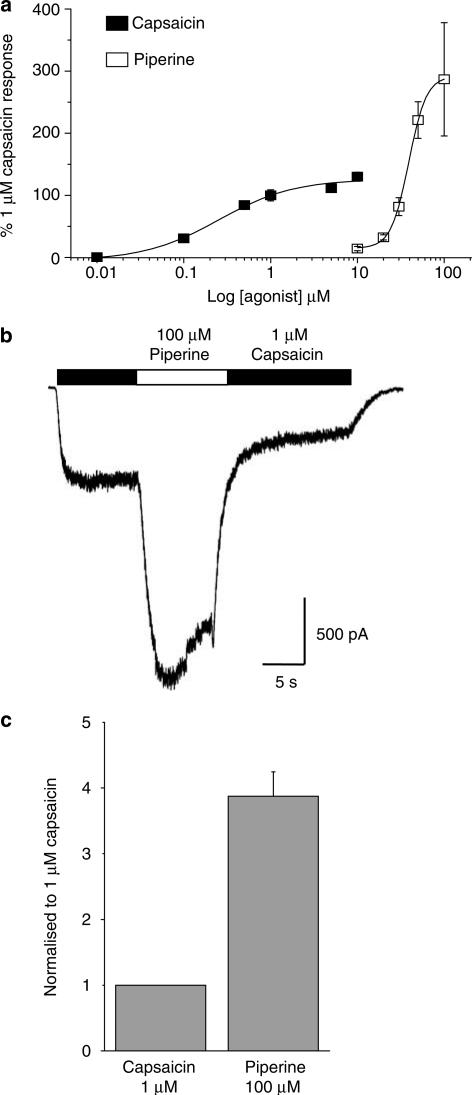Figure 3.
Piperine exhibits greater efficacy than capsaicin at the human TRPV1. (a) The concentration-response relationship for capsaicin (0.01–10 μM) and piperine (10–100 μM) are shown. These normalised data were generated by measuring the net currents evoked in response to a test concentration of agonist and are expressed as a percentage of a preceding 1 μM capsaicin control response recorded in the same cell. Data are expressed as the mean±s.e.m., where n=3–10 individual cells. The EC50 for capsaicin was 292±54 nM (Hill coefficient of 1.2±0.2; n=3–10 per concentration). The concentration–response profile for piperine clearly indicates the less potent nature of this compound with an EC50 of 37.9 μM±1.9 (Hill coefficient 3.7±0.5; n=5–9 per concentration) indicating a greater efficacy and degree of cooperativity for piperine than for capsaicin. (b) A representative trace from an experiment designed to quantify the relative difference in efficacy between a 1 μM capsaicin and 100 μM piperine activated response (n=4). A TRPV1 response was first-evoked by capsaicin (black bar) before subsequent addition of piperine. Upon switching to the solution containing piperine the peak response was significantly increased and a greater degree of receptor desensitisation was evident. (c) Mean data from the experiments described in (b) showing a 3.9±0.4 fold increase in TRPV1 current by addition of piperine. Control experiments in which the solution was switched from 1 μM capsaicin to a second identical 1 μM capsaicin solution yielded no change in peak current.

